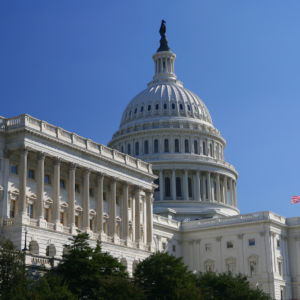Former Chicago mayor Rahm Emanuel once said “you never want a serious crisis to go to waste.”
Both political parties apparently heeded Emanuel’s advice when they passed the $2.2 trillion coronavirus relief package. The “Coronavirus Aid, Relief and Economic Security Act,” or CARES Act, included an enormous amount of spending having little to do with addressing the coronavirus or its economic fallout.
That’s not to say the CARES Act doesn’t include hundreds of billions in spending meant to help alleviate the economic crisis.
It allocates $350 billion for a Paycheck Protection Program — a loan program designed to encourage small businesses to keep employees on payroll throughout the COVID-19 crisis. Businesses can borrow up to $10 million.
If they use it to keep their employees on payroll, they need not pay it back. This will enable many small businesses to not only survive but quickly restart once restrictions on economic activity are lifted.
It includes $454 billion in emergency loans to businesses and state and local governments. This includes $25 billion for airlines and $17 billion for corporations critical to national security such as Boeing — sectors that have been hit particularly hard by the government response to COVID-19.
It provides funding to extend unemployment benefits for an extra 13 weeks.
But the package also includes hundreds of billions in spending that will do little to lessen the economic crisis. Indeed, it could even exacerbate it.
For example, the CARES Act provides an across-the-board increase of $600 per week in unemployment benefits that could incentivize many people to stay out of the workforce. Coupled with existing benefits, millions of people may end up receiving more in unemployment benefits than when they were employed.
Few rational people are going to voluntarily return to work if they will lose income in doing so. Consequently, this benefit could make it difficult for employers to rehire their employees once the economy is rebooted.
The CARES Act will also provide families with direct cash payments of $1,200 for every adult ($2,400 for married couples filing jointly) and $500 for each qualified dependent child, subject to income limitations.
The payments will start phasing out for individuals making more than $75,000 and couples making more than $150,000. Individuals earning $99,000 or more and couples earning $198,000 or more will receive nothing.
The crazy thing about this benefit is that it will be provided to all qualified individuals regardless of whether they’ve been negatively affected by the COVID-19 crisis. An accountant in rural Iowa earning $74,000 whose income hasn’t changed will still receive $1,200, for example. But a New York City housecleaner who earned $99,000 before being forced to shutter his business will receive nothing.
The thought behind the cash payment plan is that it will help stimulate the economy. However, you can’t stimulate an economy that’s been mandated closed. With little more than grocery and hardware stores open, the only thing the funding is likely to stimulate is more hoarding.
There may be a time for government stimulus, but this is not that time.
As bad as these payments are, they aren’t even the dumbest spending in the CARES Act.
Many Americans have heard about the $25 million for the Kennedy Center for the Performing Arts and the $75 million each that is going to the National Endowment of the Arts, National Endowment of Humanities and Corporation for Public Broadcasting. A few of the lesser-known, yet just as inexplicable, earmarks in the so-called COVID-19 relief package include:
— $20 million to the National Weather Service to support its warning system. COVID-19 may be a powerful virus, but it’s probably not powerful enough to change the weather.
— $345 million to the Department of Labor for training and employment services — activities that are pointless in the middle of an economic shutdown.
— $34 million to the U.S. Forest Service for cleaning and disinfecting recreation amenities. It’s difficult to determine which is more disturbing: that it will spend tens of millions disinfecting amenities that no one can use right now or that the facilities haven’t always been thoroughly cleaned and disinfected.
— $7.5 million to the Smithsonian Institution to pay for salaries and other expenses while its museums — which do not charge admission — are closed. And it will receive the money while sitting on an estimated $1.7 billion in reserves.
— $12.5 million to the Department of the Interior’s Bureau of Reclamation for “Water and Related Resources.”
— $99.5 million to the Department of Energy to provide support and access to the Science and National Nuclear Security Administration. The NNSA is tasked with advancing national security through the “military application of nuclear science.” While President Trump has called the fight against COVID-19 a “war,” I’m skeptical he wants it to be a nuclear war.
— $8.1 million to the National Archives and Records Administration — also currently closed to the public — for operating expenses.
— $60 million to NASA for “Safety, Security and Missions Services.”
Members of Congress of both parties know they’ve mutually produced a giant pile of — well, let’s use the polite term — “fertilizer.” And they don’t want their names on record associated with it.
That’s why they so viciously attacked Representative Thomas Massie, R-Kentucky, when he insisted that the House of Representatives seat a quorum — as required by the U.S. Constitution — and tried to force a roll-call vote on the monstrous spending bill to ensure accountability.
Massie failed to secure a roll-call vote.
Once the smoke clears from COVID-19, all Americans must pick up where Massie left off by holding accountable all of those responsible for the absurdities in the CARES Act.

